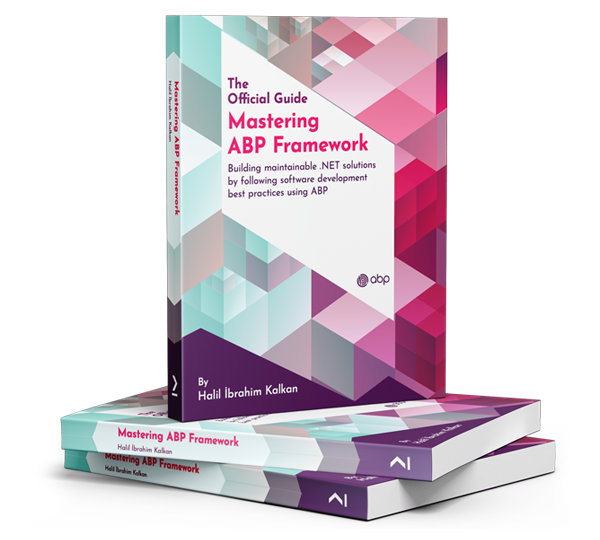We find that the basic theme is REALLY basic as the name implies. LeptonX on the other hand feel kind of bloated, very opinionated and based on our our experience, very hard to customize besides very basic CSS stuff. What you see is what you get and if you are not happy with that you are kind of out of luck and have to roll your own
Any plans for a new modern lightweight but easily customizable theme that also works well in mobile view and with Expo / React Native? Any alternatives to the ABP ones?
It seems like the latest version of LeptonX seem to lack the login link when in "mobile mode". It is not under the hamburger menu either.
If you (on a device that supports it) zoom out so you get the non mobile view, you can login and then if you return to the mobile view, you will se the account icon in the mobile nav menu.
As the previous thread was closed, I create a new one regarding the now re-added Docker (Docker compose) support in ABP Commercial to follow up on improvements and possible problems. Probably a good idea to keep it all in one place rather than creating different tickets for everything (hopefully it won't be much but you never know). Please refund this ticket as the previous one was closed and can not be reopened it seems.
https://abp.io/support/questions/8082/What-is-the-support-for-Docker-in-ABP-Commercial-today
The problem here
https://abp.io/support/questions/7455/Action-menu-is-displayed-even-if-there-are-no-actions-in-in
was supposed to be fixed in the next release (7 months ago) but is still there, at least in Angular but would imagine in all UI:s since it is probably permission related rather than UI related.
The documentation at https://abp.io/docs/latest/framework/ui/angular is good in general but it is now a bit out of date, both regarding Angular itself (like still linking to old angular.io rather than angular.dev, older versions of Angular etc) and also about the Angular implementation/template in ABP. It needs to be updated overall.
Also the Angular template itself should be probably be updated to use best practices according to newer versions of Angular but there are perhaps different opinions regarding the usage of NgModule etc. At least the Angular team does not recommend using it anymore
"IMPORTANT: The Angular team recommends using standalone components instead of NgModule for all new code. Use this guide to understand existing code built with @NgModule."
Updating the docs are probably of higher importance right now.
Thanks.
For some reason, the previous thread about the upgrade of the React Native / Expo template was closed without another one being opened so we decided to open one ourselves as there seem to be multiple problems still that needs to be solved. Maybe others have had better luck, but for us, it is not even working to launch the Expo Web with a newly created project with default configuration so we have not tried to use it for an actual production project yet. If someone else has, please share your experience, hopefully it is working better for others.
We would really need some input from ABP Team about the future of the React Native / Expo template and if it is still a first class citizen. That said, we truly hope and believe that these bugs will be ironed out and that ABP will again have a working React Native / Expo template which has been missing for several months now. Lets work together to make this great.
Thanks.
There seem to be problems/confusion regarding how to translate ABP so I create a ticket here as well, also because there might be differences between ABP Free and Commercial. Also considering that you may or may not have access to the source code needed for things outside of the ABP open source framework.
https://github.com/abpframework/abp/issues/21473
Please provide updated instructions on how we can translate ABP Commercial to Swedish (or any other language for that matter) in a way that works properly with latest ABP version. We don't mind doing a lot of the required leg work and sharing the result as long as we get clear instructions/documentation on how to do it.
Thanks.
It used to be that at least ABP Commercial came with full (or at least good) support for Docker, including multi stage Dockerfiles with support for Docker Compose etc. But this does not seem to be the case anymore, the included Dockerfiles are very minimal and isn't even recognized by Visual Studio as Dockerfiles it seems. They also does not seem to work so you can publish to Docker Hub etc. (as Visual Studio claim there is no Dockerfile)
Even finding Docker in the current documentation is hard, we've only been able to find it mentioned in the 8.1 documentation and that seems to be outdated now, for example the build-images-locally.ps1 mentioned there does not seem to exist anymore
https://abp.io/docs/commercial/8.1/startup-templates/application/deployment-docker-compose?UI=BlazorServer&DB=EF&Tiered=Yes
Have tried to find information about this change including updated documentation for the changes that have been made but not found it so:
You can of course build your own Dockerfiles from scratch etc. but my questions here is about what support you get out of the box for Docker in ABP.
Also created an issue on GitHub for this, but the answers might be different between the free and the commercial version of ABP.
https://github.com/abpframework/abp/issues/21057
Thanks.
As it seems a bit uncertain how much attention posts in the "Bugs & Issues v8.3.x" thread gets, and I feel this is an important and kind of urgent question, I post it in a separate ticket. This is especially true if it isn't an intended change as it would most likely mean that solutions created now would not work with future updates of ABP Suite / ABP Studio.
What is the reasoning for the new directory structure of solutions created with ABP Suite / ABP Studio? It used to be that you got a folder for each "application" under the main directory like "MyApplication" = > "aspnet-core", "angular", "react-native" etc but now it seems to be that angular and react-native folders are moved within what used to be the aspnet-core folder. So now you have SLN file and "test" folder for aspnet-core stuff right next to your angular and react-native folders, even though they are stand alone applications (kind of).
Is this even an intended change or some kind of bug? There might be advantages of this as well, like using only one repo for everything etc (which could be both good or bad depending on personal preference).
You can of course change this after creation, but I would imagine that doing that would break code generation etc?
Is there a guide on if we want to tidy this up a bit and still make sure that ABP Suite etc works (and that won't break with updates etc)?
It seems ABP is missing several languages that has been translated, some of them even months back, but they still do not seem to be included in ABP releases. Created an Issue about it over att GitHub but would like to highlight this as several people, including me, have probably spent some time it translating this and it would seem like a quite simple job just to include them as they have already been merged into /dev. Obviously, being able to provide an application in the correct language is kind of a big deal when targeting local audiences/clients. Also, not sure if there are differences here between ABP and ABP Commercial, as the later includes additional modules etc. which we are unsure how to translate as they are probably not in the public repo.
https://github.com/abpframework/abp/issues/20864
Or are we missing something here that we need to do ourselves (besides translating and submitting a PR)?
If it had just been one or maybe a few files we could have done it manually for the time being, but these are quite a lot of files and I am not sure if you can even override translations for commercial modules etc.
Thanks.

